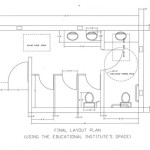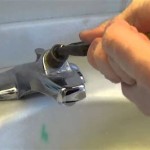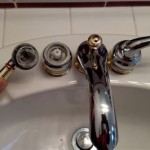Installing a Trap for Bathroom Sink Drains
Bathroom sink drains are essential for maintaining hygiene and preventing unpleasant odors. They allow water to flow away from the sink, but they also serve a critical role in preventing sewer gases from entering your home. This crucial task is accomplished by a trap, a U-shaped pipe filled with water that acts as a barrier. When a trap is missing or malfunctioning, it can lead to a variety of problems, including unpleasant smells, insects, and even health hazards. Installing a trap for your bathroom sink drain is a straightforward plumbing project that can be completed with basic tools and a little know-how.
Understanding the Importance of Traps
Traps are fundamental components of any plumbing system. They are designed to prevent the passage of gases and odors from the sewer system into living spaces. The U-shaped design of the trap ensures that a small amount of water remains within the pipe, acting as a seal. This water barrier effectively blocks the flow of sewer gases, preventing them from escaping into the home. Without a working trap, the drainage system becomes a potential pathway for unpleasant odors, insects, and even hazardous fumes.
In addition to odor control, traps also play a vital role in preventing the spread of bacteria and other microorganisms. The water in the trap acts as a barrier, inhibiting the movement of harmful substances from the sewer system into the bathroom. Installing a trap can therefore contribute to a healthier and more comfortable living environment.
Types of Traps for Bathroom Sinks
There are several types of traps available for bathroom sink drains, each with its own advantages and disadvantages.
P-Trap
The most common type of trap is the P-trap, named for its distinctive P-shaped design. It is relatively inexpensive and easy to install, making it a popular choice for homeowners. P-traps are typically made of PVC or ABS plastic, offering durability and resistance to corrosion. They are readily available at most hardware stores.
S-Trap
S-traps, similar to P-traps in function, have a more curved, S-shaped design. They are less common than P-traps but can be found in older homes or specific plumbing applications.
Bottle Trap
Bottle traps are another option, commonly used in under-mount sinks. They feature a cylindrical design with a removable cap for cleaning. Bottle traps are often made of chrome or plastic, adding a decorative touch to the bathroom sink.
Installing a Trap for Your Bathroom Sink
Installing a trap for your bathroom sink is a relatively simple task that can be completed with basic tools and a little plumbing knowledge. Here's a general guide to the installation process:
- Gather the necessary materials: This includes the desired trap type, pipe sealant, adjustable wrench, pipe cutter (if necessary), and a level.
- Disconnect the existing drain: If your sink already has a drain pipe, carefully disconnect it from the drain pipe below. Make sure to use a bucket or other container to catch any remaining water.
- Install the new trap: Connect the trap to the drain pipe coming from the sink, ensuring a tight seal. Use pipe sealant to ensure a leak-proof connection.
- Connect to the drain pipe: Connect the other end of the trap to the drain pipe below. Use pipe sealant and a level to ensure a secure and properly leveled connection. Remember to use a wrench for tightening the connections.
- Test for leaks: After installation, thoroughly test the trap for leaks by running water through the sink. Check for any leaks at the connections and address them immediately.
Tips for Successful Trap Installation
Here are some additional tips to ensure a successful trap installation:
- Choose the right trap size: Ensure the trap size is compatible with the sink drain and the drain pipe below.
- Use high-quality materials: Choosing high-quality traps and materials will ensure longevity and reliable functionality.
- Secure connections: Properly tightening the connections using a wrench is essential to prevent leaks.
- Clean frequently: Regularly cleaning the trap will prevent clogs and maintain its effectiveness.
Installing a trap for your bathroom sink drain is a vital step in maintaining a functional and hygienic plumbing system. By understanding the importance of traps, choosing the right type, and following proper installation procedures, homeowners can ensure a clean and odor-free bathroom.
If you are uncertain about any aspect of the installation process, it is always best to consult a professional plumber. They can provide expert advice and ensure a safe and efficient installation.

How To Install P Trap And Bathroom Sink Drain Piping Easy Installation For Beginners

How To Install A P Trap For Kitchen And Bathroom Sinks

Simple Drain 1 25 In Rubber Threaded P Trap Bathroom Single Sink Kit 3ea 1v2 Tc0 The Home Depot

Bathroom Sink Plumbing Installation Diy Montreal

How To Install The P Trap Under A Sink Dummies

Bathroom Sink Plumbing Installation Diy Montreal

Replace A Trap And Add Cleanout Fine Homebuilding

What Is A P Trap Family Handyman

How To Install A Pipe From Sink Drain Wall Ehow

Snappytrap Universal Drain Kit For Bathroom Sinks Dk 105 The Home Depot
Related Posts







